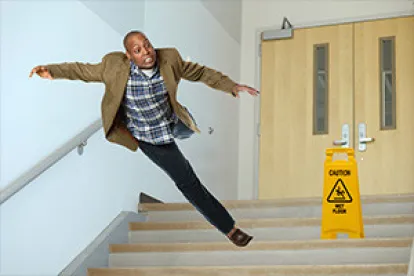The company is the largest one in the world according to its revenue in 2016. It is believed to be the company that is most often sued in personal injury claims in the U.S. Almost 20 lawsuits are filed against Wal-Mart every day. While a large number of these lawsuits are filed by its employees for business disputes and employment claims such as wage and hour and discrimination suits, many are also personal injury cases.
As a huge and powerful defendant, Wal-Mart presents some unique issues in personal injury lawsuits that most people do not have to deal with when they sue other companies. Most companies work to minimize their losses in personal injury lawsuits, and Wal-Mart is no exception. If you have been injured while you were inside of a Wal-Mart in Los Angeles or anywhere in California, you will likely need the help of an experienced personal injury attorney in order to recover a fair amount of damages for your losses. Here are some common types of personal injury claims that happen at Wal-Mart, why suing Wal-Mart presents unique issues and some examples of previous jury verdicts in California personal injury claims filed against the company.
Common injury case types involving Wal-Mart and the general rule of law in California
Many personal injury cases against Wal-Mart involve premises liability claims. The law in California is that business and property owners owe a duty of care to people who are legally on their premises. They are required to correct dangerous conditions about which they knew or should have known. Business owners are also required to warn customers about the existence of known hazards. Common cases involving personal injury include slipping and falling in spills or water, tripping over items left in aisles, being injured by falling merchandise that was not stocked appropriately, defective shelving that causes cuts and negligent security issues that result in robberies, assaults and other incidents. If a company like Wal-Mart breaches its duty of care, and its negligence in doing so results in an accident that causes harm to a customer, the company may be found to be liable to pay damages for all of the injured person’s losses.
Why bringing a personal injury claim against Wal-Mart is more difficult
As the biggest retail company in the world, Wal-Mart has the resources it needs to hire attorneys and investigators that are focused on disproving claims that are made against it. Wal-Mart is self-insured. It has established its own subsidiary, called Claims Management, Inc., which acts as the company’s insurance adjuster. Wal-Mart sets aside money in its budget each year for the payment of claims. When claims are successful, they are paid directly out of this fund. When the company pays out less, its bottom line is better. This gives Wal-Mart a vested interest in litigating all claims involving substantial injuries, and they often will use any means possible to make the litigation process expensive and difficult. For example, they may do the following:
-
Refusing to turn over documents in discovery
-
Objecting to discovery requests, including those requesting video footage of the incident
-
Filing motions for summary judgment, which are motions to dismiss claims on the merits
-
Requesting removal of cases from state to federal court
-
Hiring experts to testify on their behalf regarding liability, which often means experts who will testify that the plaintiffs caused their own injuries
While most corporations will quietly settle claims in order to avoid negative publicity, Wal-Mart rarely does so. Instead, the company tends to fight each case very aggressively. Part of the reason the company may act in this way is to discourage other injured people from filing lawsuits. Despite its size, strength and aggressiveness, the company often loses cases when people have been injured by its negligence or the negligence of its employees.
Jury verdict examples of personal injury claims litigated against Wal-Mart in California
1. Wilson v. Wal-Mart Stores Inc.
A woman who was shopping in a Wal-Mart in Stockton, California saw her nephew standing in a puddle of water on the floor in the store’s garden center. After warning him not to fall, the woman slipped and fell herself. She suffered a herniated disc in her back that left her suffering chronic pain. Her injuries also required repeated surgeries. At trial, the jury awarded the woman a gross award of $350,000. Because the jury found that she was 50 percent at fault, her net award was $175,000.
2. Westphal v. Wal-Mart Stores Inc.
A 55-year-old woman who was working as a product demonstrator in a Wal-Mart store in California slipped and fell on a wet, concrete floor, landing on her back and suffering serious injuries as a result. The woman was left with chronic pain and had to use crutches and other mobility devices for months. At trial, the jury found in the woman’s favor and awarded her economic damages of $8,000 and noneconomic damages of $150,000. The jury found that she was 5 percent liable for her accident, so her net award was $150,100. Wal-Mart appealed, and the woman asked for the court to order Wal-Mart to pay the costs of the appeal because it was frivolous. The appellate court agreed and ordered Wal-Mart to pay the woman’s costs in the appeal because it was baseless.



 />i
/>i

